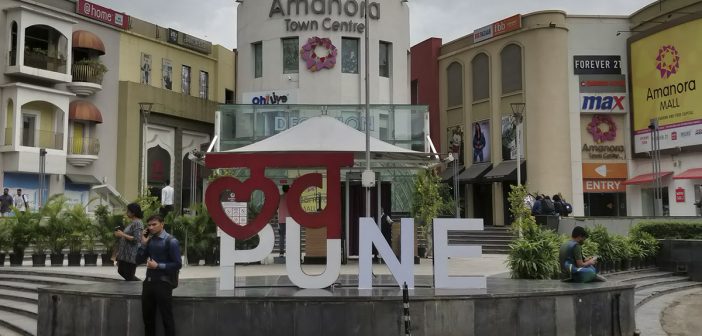Pune, often referred to as the “Oxford of the East,” has undergone a remarkable transformation over the past two decades, driven largely by an influx of millennials entering its burgeoning IT sector. This demographic shift has significantly influenced the city’s economic landscape, urban development, and cultural dynamics. This article explores how the arrival of millennials from across India is reshaping Pune, highlighting both the positive and negative aspects of this transformation.
The Millennial Migration to Pune: Trends and Statistics
Pune’s IT industry has seen explosive growth, making it a prime destination for millennials seeking career opportunities. According to data from the Pune Metropolitan Region Development Authority (PMRDA), the city’s IT sector has grown at an annual rate of approximately 15% over the last decade. As of 2024, Pune houses over 200 IT companies, including major players like Infosys, Wipro, and Tata Consultancy Services (TCS), which collectively employ tens of thousands of millennials.
The influx of millennials into Pune has been driven by several factors:
- Career Opportunities: The IT sector in Pune offers attractive career prospects, including competitive salaries, opportunities for rapid advancement, and exposure to cutting-edge technologies. This has made Pune an appealing destination for young professionals from across India.
- Educational Institutions: Pune’s reputation for its high-quality educational institutions, including the Indian Institute of Information Technology (IIIT) and Symbiosis Institute of Computer Studies and Research, has contributed to the city’s allure for tech-savvy millennials.
- Affordable Cost of Living: Compared to other IT hubs like Bengaluru and Mumbai, Pune offers a relatively lower cost of living, making it a more attractive option for millennials starting their careers. According to Numbeo, the cost of living in Pune is approximately 20-30% lower than in Bengaluru and Mumbai, particularly in terms of housing and dining.
Positive Impacts on Pune’s Landscape and Culture
1. Economic Growth and Urban Development
The influx of millennials has significantly contributed to Pune’s economic growth. The IT industry has spurred development in infrastructure, with new office spaces, residential complexes, and commercial establishments springing up across the city. The Pune Metropolitan Region Development Authority (PMRDA) reports that residential real estate prices in IT-centric areas like Hinjewadi, Kharadi, and Magarpatta have seen a rise of up to 40% over the past five years.
This economic boom has also led to the creation of new job opportunities in sectors related to IT, such as real estate, hospitality, and retail. Local businesses have flourished, catering to the needs of the growing millennial population.
2. Cultural Diversity and Vibrancy
Millennials have brought with them a diverse range of cultural influences, enriching Pune’s cultural fabric. The city has seen an increase in multicultural events, music festivals, and food festivals, reflecting the tastes and preferences of its new residents. Popular events like the Pune International Film Festival and the Pune Food Festival have gained prominence, attracting both locals and visitors.
Additionally, the rise of coworking spaces and startup incubators in Pune has fostered a vibrant entrepreneurial culture. Platforms like 91springboard and WeWork have become hubs for innovation and collaboration, supporting the growth of startups and small businesses.
3. Modernization and Lifestyle Changes
The millennial influx has driven modernization in various aspects of urban life. Pune’s food and entertainment scene has evolved to include a wider variety of international cuisines, trendy cafes, and nightlife options. The city’s infrastructure has also seen improvements, including better public transportation options and enhanced recreational facilities.
Negative Impacts on Pune’s Landscape and Culture
1. Increased Traffic and Infrastructure Strain
The rapid urbanization driven by the IT boom has led to increased traffic congestion and strain on existing infrastructure. According to the Pune Municipal Corporation, traffic congestion in Pune has worsened, with average commute times increasing by up to 30% in key areas. The surge in vehicle numbers and inadequate public transportation options have contributed to this problem.
Additionally, the construction of new residential and commercial projects has led to issues such as inadequate waste management and environmental degradation. The city’s green spaces have diminished, and air quality has become a concern, with Pune often featuring on lists of cities with poor air quality.
2. Rising Property Prices and Cost of Living
While the lower cost of living compared to other IT hubs initially attracted millennials, the rapid rise in property prices and living costs has become a challenge. Residential real estate prices in IT-centric areas have surged, making it difficult for new entrants to afford housing. According to data from Magicbricks, the average price of residential property in Hinjewadi has increased by approximately 25% over the past three years.
The rising cost of living has also impacted other aspects of urban life, including dining and entertainment. As property prices increase, so does the cost of everyday amenities, putting pressure on both millennials and long-time residents.
3. Social Displacement and Cultural Shifts
The influx of millennials has led to social displacement in certain areas of Pune. Long-time residents have expressed concerns about the changing character of their neighborhoods, with traditional businesses and cultural landmarks being replaced by modern establishments catering to the new demographic.
Moreover, the rapid pace of change has sometimes led to a clash of cultures, with new and old residents navigating differing expectations and lifestyles. This has occasionally resulted in tensions and a sense of cultural dislocation among some segments of the population.
Conclusion
The arrival of millennials in Pune’s IT industry has undoubtedly transformed the city’s economic, cultural, and social landscape. While the growth has brought economic prosperity, modernization, and cultural vibrancy, it has also presented challenges such as traffic congestion, rising living costs, and social displacement. As Pune continues to evolve, finding a balance between embracing the benefits of this demographic shift and addressing its associated challenges will be crucial for maintaining the city’s unique character and ensuring a high quality of life for all its residents.





